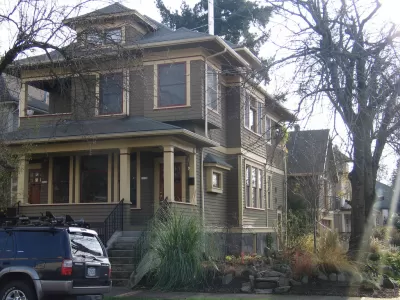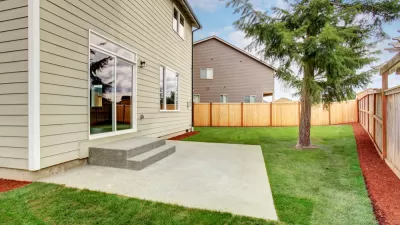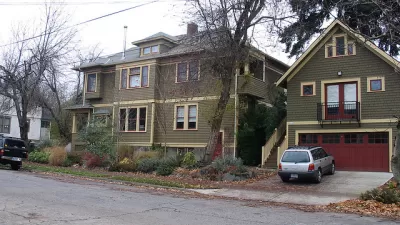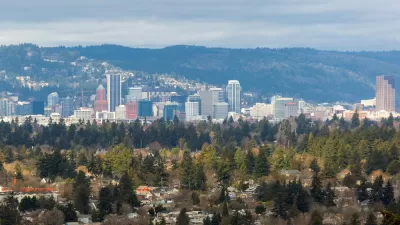Since Portland began subsidizing accessory dwelling units (ADU) by waiving development fees, construction of ADUs have increased to a pace of more than 100 a year. A new study finds additional benefits in the low impact of ADUs on neighborhoods.

Michael Anderson reports the findings of a new study by the State of Oregon Department of Environmental Quality: "When it comes to cars, accessory units in backyards and basements are nearly as low-impact as big apartment buildings next to bus lines."
The study, titled Accessory dwelling units in Portland, Oregon: evaluation and interpretation of a survey of ADU owners [PDF], found that "[the[ average rental unit in Portland brings 1.31 cars on site, according to the U.S. Census. For transit-oriented apartment buildings, that falls to 0.83 cars — and for accessory dwelling units, it’s 0.93 cars."
"In other words, transit-oriented apartments have been bringing 37 percent fewer cars into the city than the typical rental unit, and accessory dwellings (usually defined in Portland as being less than 800 square feet with a private entrance, bathroom and kitchen, among other requirements) bring in 29 percent fewer cars."
FULL STORY: Backyard homes are almost as car-lite as apartments on transit lines, study finds

Maui's Vacation Rental Debate Turns Ugly
Verbal attacks, misinformation campaigns and fistfights plague a high-stakes debate to convert thousands of vacation rentals into long-term housing.

Planetizen Federal Action Tracker
A weekly monitor of how Trump’s orders and actions are impacting planners and planning in America.

In Urban Planning, AI Prompting Could be the New Design Thinking
Creativity has long been key to great urban design. What if we see AI as our new creative partner?

King County Supportive Housing Program Offers Hope for Unhoused Residents
The county is taking a ‘Housing First’ approach that prioritizes getting people into housing, then offering wraparound supportive services.

Researchers Use AI to Get Clearer Picture of US Housing
Analysts are using artificial intelligence to supercharge their research by allowing them to comb through data faster. Though these AI tools can be error prone, they save time and housing researchers are optimistic about the future.

Making Shared Micromobility More Inclusive
Cities and shared mobility system operators can do more to include people with disabilities in planning and operations, per a new report.
Urban Design for Planners 1: Software Tools
This six-course series explores essential urban design concepts using open source software and equips planners with the tools they need to participate fully in the urban design process.
Planning for Universal Design
Learn the tools for implementing Universal Design in planning regulations.
planning NEXT
Appalachian Highlands Housing Partners
Mpact (founded as Rail~Volution)
City of Camden Redevelopment Agency
City of Astoria
City of Portland
City of Laramie





























